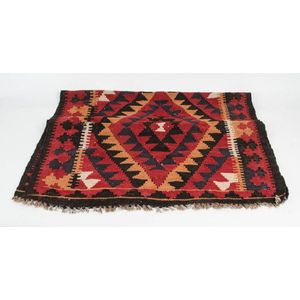Ming-style Buddhist Lion Joss Stick Holders
You must be a subscriber, and be logged in to view price and dealer details.
Subscribe Now to view actual auction price for this item
When you subscribe, you have the option of setting the currency in which to display prices to $Au, $US, $NZ or Stg.
- A/f, as Inspected - The letters "A/F" or "as inspected" as part of a description is the cataloguer's shorthand for "all faults" or "as found", meaning the item has some type of damage or deficiency, it is of uncertain date or provenance, and/or that the seller takes no responsibility for the completeness of the item or the accuracy of the description.
- Foo Dogs - Foo Dogs, also known as "Fo Dogs", "Fu Dogs", and " Buddhist lions" are the Chinese guardian lions that have traditionally stood in front of Chinese Imperial palaces and tombs, government offices, and the homes of the influential are believed to have powerful mythic protective benefits.
They are a popular motif in decorative arts, especially ceramics and garden statuary, where they are depicted in pairs, comprising of a male resting his paw upon an embroidered ball, representing supremacy over the world, and a female restraining a playful cub, representing the nurturing properties of the female. - Ming Dynasty - The Ming Dynasty was a ruling dynasty of China from 1368 to 1644. It succeeded the Yuan Dynasty and preceded the Qing Dynasty. The Ming Dynasty was established by Zhu Yuanzhang, a former Buddhist monk who became a rebel leader and eventually overthrew the Mongol Yuan Dynasty. During the Ming Dynasty, China experienced a period of relative stability and prosperity. The government was centralized and bureaucratic, with the emperor at the top of the hierarchy. The Ming Dynasty is known for its cultural achievements, including the development of porcelain, the invention of movable type printing, and the construction of the Great Wall of China.
This item has been included into following indexes:
Visually similar items

Hungarian Torontali Kilim rug with geometric design, early to mid 20th century. 200 x 150 cm.

A Chinese blue and white porcelain box and cover, cube shaped raised on four legs modelled as children standing on a square frame base, captured ring handles issue from the side, the lid surmounted by a temple dog, six-character mark under the base. Height

Eight Hornby Oo Guage rolling Stock, including: R.437 Br (Southern Region composite coach, R.438 Br (Southern Region) brake coach, R.424 Br brake 3rd coach, R.442 composite coach, R.424 Sr composite coach, R.425 Sr brake 3rd coach, R.457 Gwr brake 3rd coac

Three Wedgwood Jasperware plates, commemorating Australia's Americas cup, South Australian Jubilee and Americas cup Defence plate, boxed, (3)
